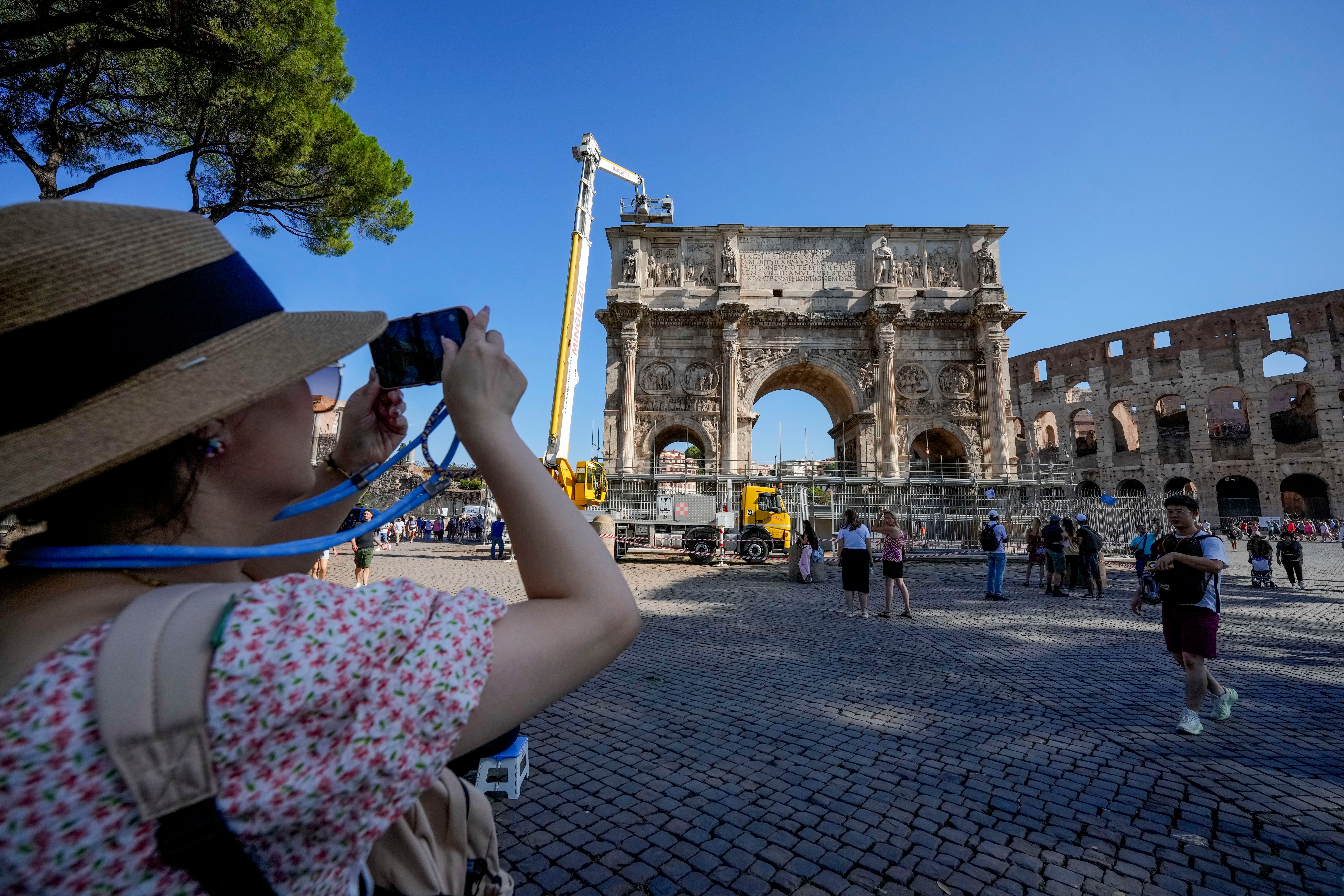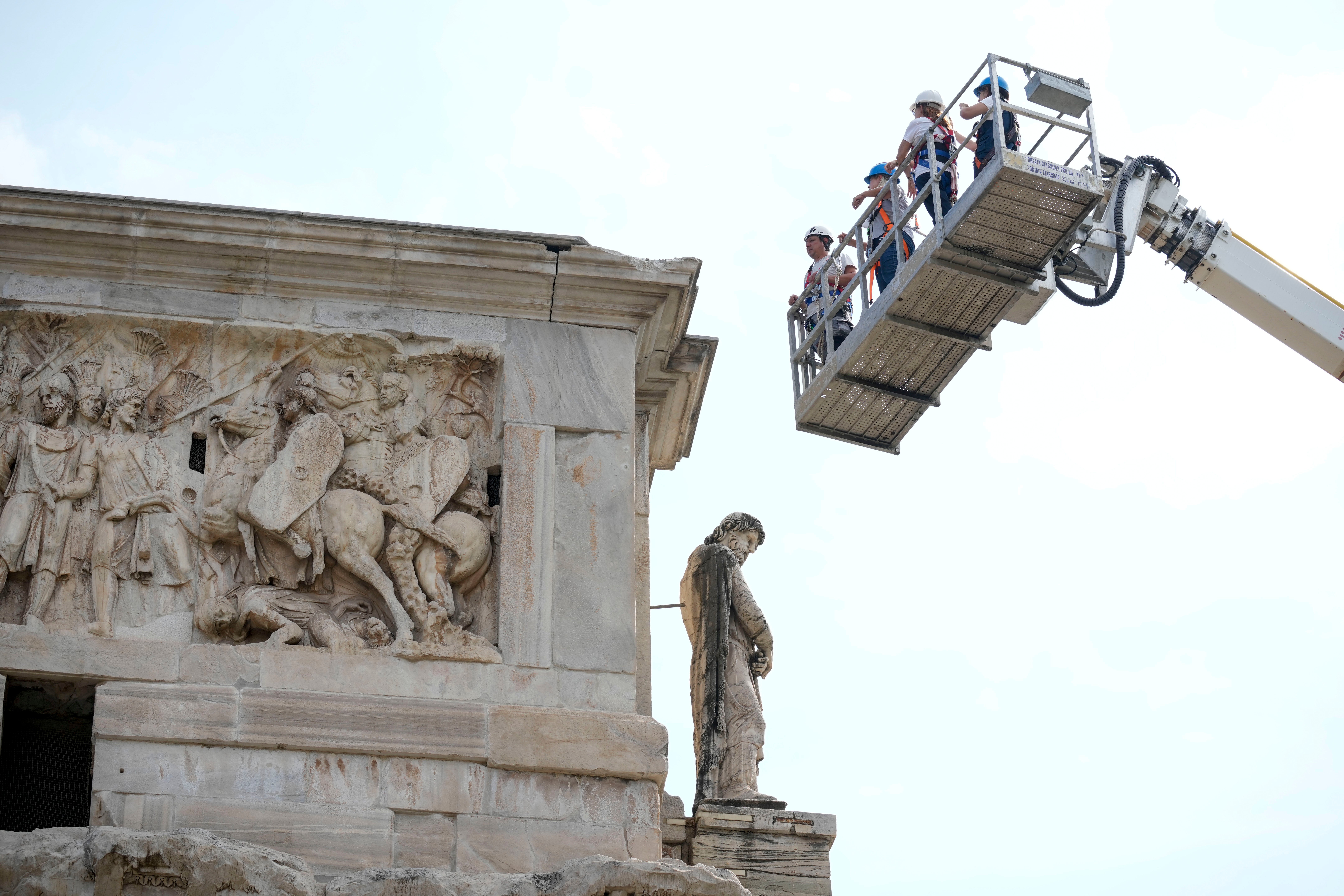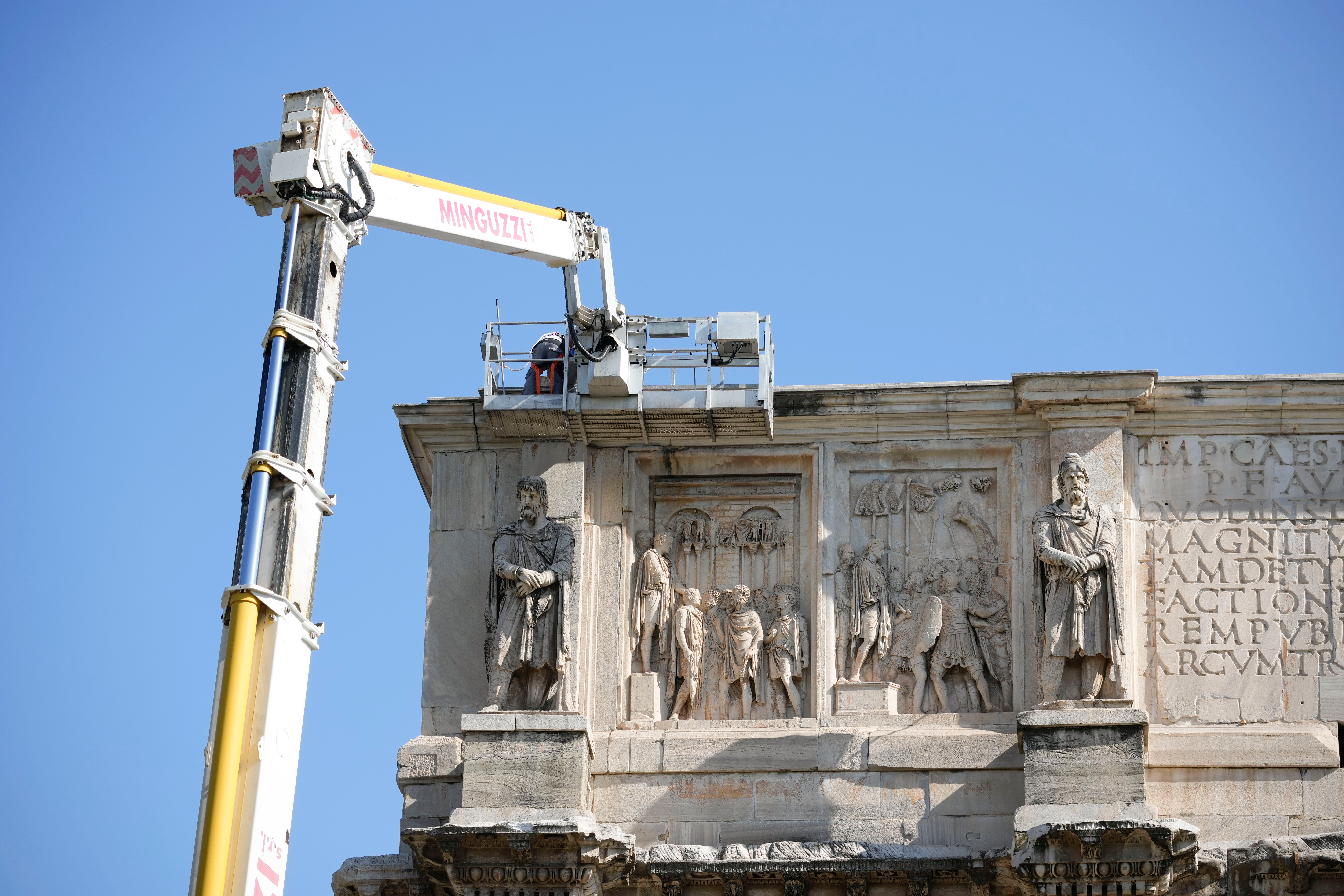Lightning damages Rome’s famous tourist attraction as freak storm hits
The freak weather was a so-called ‘downburst’, Rome Mayor Roberto Gualtieri said

Your support helps us to tell the story
From reproductive rights to climate change to Big Tech, The Independent is on the ground when the story is developing. Whether it's investigating the financials of Elon Musk's pro-Trump PAC or producing our latest documentary, 'The A Word', which shines a light on the American women fighting for reproductive rights, we know how important it is to parse out the facts from the messaging.
At such a critical moment in US history, we need reporters on the ground. Your donation allows us to keep sending journalists to speak to both sides of the story.
The Independent is trusted by Americans across the entire political spectrum. And unlike many other quality news outlets, we choose not to lock Americans out of our reporting and analysis with paywalls. We believe quality journalism should be available to everyone, paid for by those who can afford it.
Your support makes all the difference.Rome‘s famous Constantine Arch near the Colosseum has been damaged by a lightning strike during a violent thunderstorm, loosening fragments from the ancient structure.
The fragments from Tuesday’s lightning strike were immediately gathered and secured by workers at the Colosseum Archeological Park, officials said. The extent of the damage was being evaluated.
“The recovery work by technicians was timely. Our workers arrived immediately after the lightning strike. All of the fragments were recovered and secured,’’ the park said in a statement.
The honorary arch, more than 20 meters (nearly 70 feet) in height, was erected in 315 A.D. to celebrate the victory of Emperor Constantine over Maxentius following the battle at Milvian Bridge.
It is about 25 metres (82 feet) high and is located in the same pedestrian area where the Colosseum stands, a major tourist hotspot.
“A lightning strike hit the arch right here and then hit the corner and we saw this fly off,” a tourist told Reuters, pointing to a large block of stone fallen to the ground.

Video images showed other blocks of stone and rubble lying around the monument, and archaeological park staff working to collect them.
“All fragments were recovered and secured. Damage assessments have already begun and the analyses will continue tomorrow morning,” the archaeological park said.
The arch was hit on its southern side, where pre-scheduled conservation work had started two days ago and which will now also focus on repairing the damage, it added.

The accident took place during a heavy thunderstorm that felled trees and branches and flooded several streets of the Italian capital.
The Civil Protection agency said 60 millimetres (2.36 inches) of rain fell on central Rome in less than one hour, about as much as would normally fall in a month during autumn.
The freak weather was a so-called “downburst”, Rome Mayor Roberto Gualtieri said, referring to the kind of severe storm, featuring powerful downward winds, believed to have also caused last month’s sinking of British tech tycoon Mike Lynch’s yacht off Sicily.
“The event that hit Rome is truly unprecedented, because it was so powerful and concentrated in a very short time and in some areas of the city, starting from the historic center,” Gualtieri said in a statement.